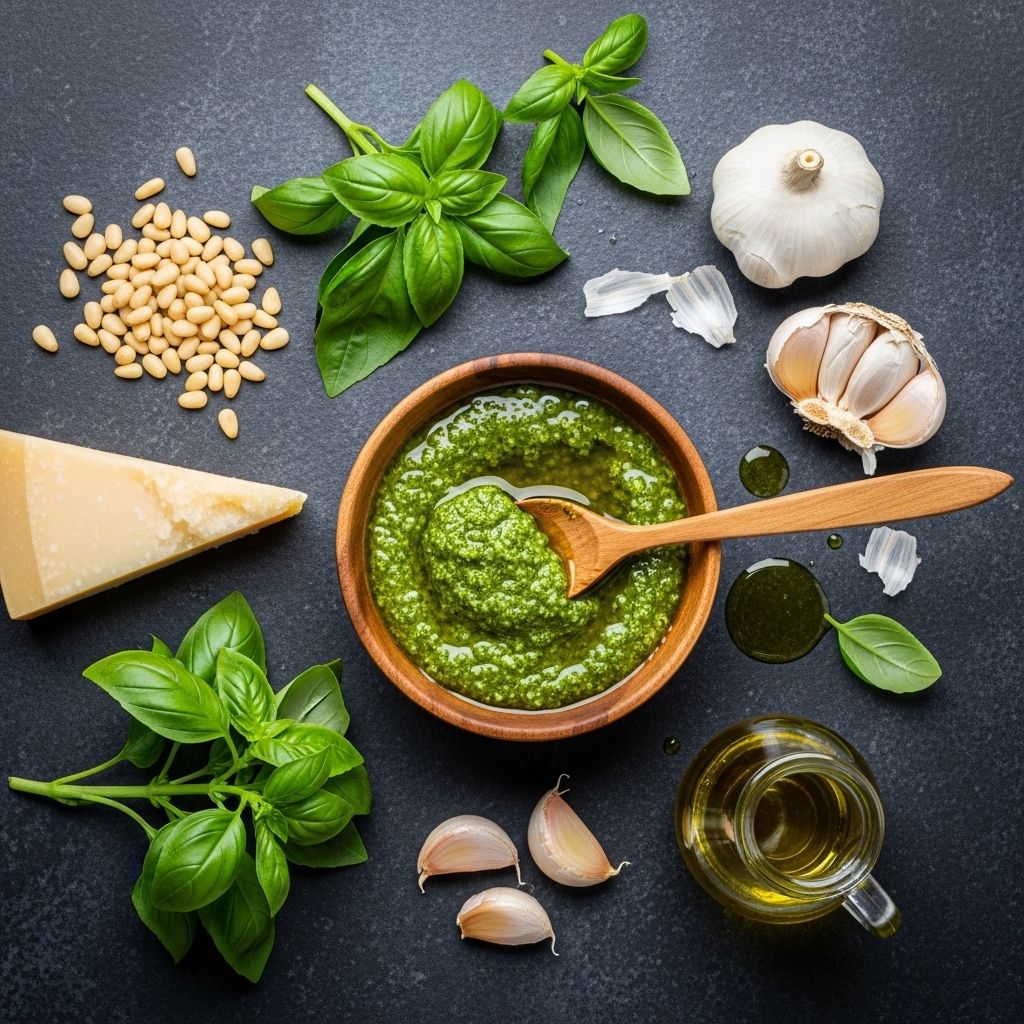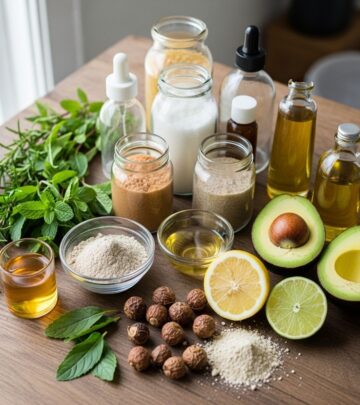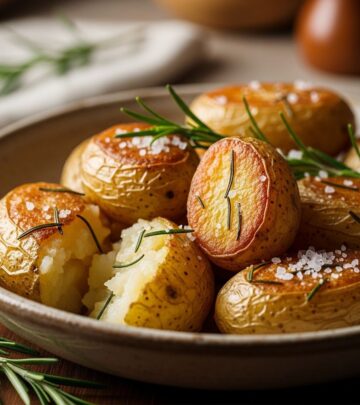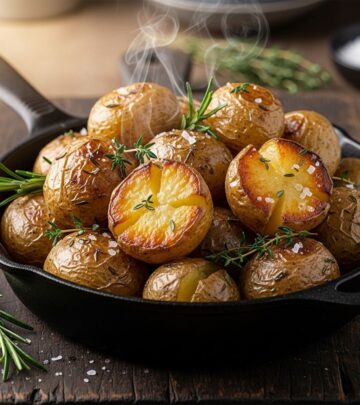Homemade Pesto Sauce Recipe: Fresh Basil In 10 Minutes
Transform your meals with this vibrant, herb-packed Italian classic sauce in just minutes

Image: HearthJunction Design Team
Homemade Pesto Sauce: Fresh Basil Perfection in Minutes
There’s something magical about the vibrant green color and aromatic scent of freshly made pesto sauce. This Italian classic has been enhancing meals for centuries, and with good reason. The combination of fresh basil, nuts, garlic, and cheese creates a versatile sauce that can transform ordinary dishes into extraordinary culinary experiences. Best of all, authentic pesto sauce comes together in just 10 minutes, making it perfect for busy weeknights or impressive weekend entertaining.
What Is Pesto Sauce?
Pesto originated in Genoa, Italy, and the name comes from the Italian word ‘pestare,’ meaning ‘to pound’ or ‘to crush.’ Traditionally, pesto was made by crushing ingredients with a mortar and pestle, which released the essential oils and flavors of the herbs and other ingredients. Today, while some purists still prefer the mortar and pestle method for the most authentic texture and flavor profile, most home cooks opt for the convenience of a food processor, which delivers excellent results in a fraction of the time.
Classic pesto, also known as Pesto alla Genovese, consists of fresh basil leaves, pine nuts, garlic, Parmesan cheese, and high-quality olive oil. The combination creates a sauce with bright, herbaceous notes balanced by the richness of nuts and cheese. While traditional recipes are timeless for a reason, modern variations might include different herbs, nuts, or additions to suit various dietary preferences or to make use of seasonal ingredients.
Ingredients for Classic Pesto Sauce
The beauty of pesto lies in its simplicity. With just a handful of high-quality ingredients, you can create a sauce that’s greater than the sum of its parts. Here’s what you’ll need:
- Fresh Basil Leaves: The star of the show, fresh basil provides the distinctive color and flavor that defines pesto. For the best results, use young, vibrant green leaves without any brown spots or discoloration. Two cups of packed basil leaves will give you the perfect base for your sauce.
- Nuts: Traditional pesto calls for pine nuts, which offer a subtle, buttery flavor that complements the basil beautifully. However, if pine nuts are unavailable or beyond your budget, walnuts make an excellent substitute. Whatever you choose, lightly toasting the nuts before adding them to the processor will enhance their flavor.
- Garlic: Fresh garlic cloves add a pungent kick that balances the sweetness of the basil and richness of the nuts. For a standard batch of pesto, two cloves provide enough flavor without overwhelming the other ingredients. Adjust according to your preference for garlic intensity.
- Cheese: Freshly grated Parmesan cheese adds saltiness and umami depth to the sauce. For the most authentic flavor, use Parmigiano-Reggiano and grate it yourself rather than using pre-packaged grated cheese, which often contains anti-caking agents that can affect the texture of your pesto.
- Olive Oil: Use the best quality extra-virgin olive oil you can afford, as its flavor will be prominent in the finished sauce. The oil not only binds the ingredients together but also contributes its own fruity notes to the final product.
- Salt and Pepper: Simple seasoning brings all the flavors together. Remember that Parmesan cheese is already salty, so taste your pesto before adding additional salt.
Equipment You’ll Need
One of the best things about making pesto is that it requires minimal equipment. Here’s what you’ll need to have on hand:
- Food Processor or Blender: While traditional pesto is made with a mortar and pestle, a food processor makes quick work of the task. A blender can also work in a pinch, though you may need to stop and scrape down the sides more frequently.
- Measuring Cups and Spoons: For accurately portioning your ingredients, especially when making pesto for the first time.
- Spatula: Useful for scraping down the sides of the processor bowl and transferring the finished pesto to a storage container.
- Storage Container: If not using immediately, you’ll want an airtight container to keep your pesto fresh.
Step-by-Step Instructions
Making pesto sauce is remarkably simple, requiring just a few straightforward steps:
1. Gather Your Ingredients
Before beginning, ensure all your ingredients are measured and ready to go. This makes the process smooth and efficient. If toasting your nuts, allow them to cool completely before proceeding.
2. Process the Dry Ingredients
Place the basil leaves, nuts, garlic cloves, and cheese in your food processor. Pulse several times until the ingredients are finely chopped. You’re looking for a consistent, grainy texture at this stage, not a smooth paste.
3. Add the Olive Oil
With the processor running, slowly drizzle the olive oil through the feed tube in a steady stream. This gradual addition allows the oil to emulsify properly with the other ingredients, creating a smooth, cohesive sauce. Continue processing until the pesto reaches your desired consistency—some prefer it slightly chunkier, while others like a smoother sauce.
4. Season to Taste
Add salt and freshly ground black pepper to taste. Remember that the flavor will develop and intensify as the pesto sits, so you might want to season a bit more conservatively at first.
5. Adjust Consistency if Needed
If your pesto seems too thick, you can add a bit more olive oil. If it’s too thin, add a little more cheese or nuts to achieve your desired texture.
Storing and Preserving Your Pesto
Freshly made pesto is at its peak flavor immediately after preparation, but there are several ways to store it for future use:
Refrigerator Storage
Transfer your pesto to an airtight container and pour a thin layer of olive oil on top to prevent oxidation (which causes browning). Stored this way, pesto will keep in the refrigerator for up to a week. The flavor may intensify over the first day or two as the ingredients meld together.
Freezing Pesto
For longer storage, pesto freezes beautifully. Portion the sauce into ice cube trays, freeze until solid, then transfer the cubes to a freezer bag. This method allows you to thaw exactly the amount you need. Frozen pesto maintains good quality for up to 6 months. Some cooks prefer to freeze pesto without the cheese, adding it fresh after thawing for the best flavor and texture.
Versatile Ways to Use Pesto Sauce
While pesto is perhaps most famously paired with pasta, its versatility extends far beyond that classic application:
Pasta Perfection
Toss warm pasta with pesto for a quick and satisfying meal. The residual heat from the pasta will warm the sauce just enough to release its aromatic qualities. For a complete meal, add cherry tomatoes, grilled chicken, or sautéed vegetables.
Pizza Topping
Use pesto as an alternative to tomato sauce on homemade or store-bought pizza dough. Top with mozzarella, cherry tomatoes, and fresh arugula after baking for a gourmet treat.
Sandwich Spread
Elevate your sandwiches and wraps by substituting pesto for mayonnaise or mustard. It pairs particularly well with turkey, mozzarella, and roasted vegetables.
Protein Enhancer
Spread pesto on chicken, fish, or pork before baking or grilling for an instant flavor boost. It can also be stirred into the pan juices to create a quick sauce.
Soup Garnish
A spoonful of pesto swirled into vegetable soups, particularly tomato or minestrone, adds color and a burst of fresh flavor.
Salad Dressing
Thin pesto with additional olive oil and a splash of lemon juice for a vibrant salad dressing that works especially well with heartier greens like romaine or kale.
Variations on Classic Pesto
While the traditional basil-pine nut combination is a culinary masterpiece, don’t be afraid to experiment with these creative variations:
- Sun-Dried Tomato Pesto: Replace half the basil with rehydrated sun-dried tomatoes for a sweet-tangy twist.
- Arugula Pesto: Substitute peppery arugula for some or all of the basil for a more assertive flavor profile.
- Cilantro-Lime Pesto: Use cilantro instead of basil, add lime zest and juice, and consider substituting pepitas (pumpkin seeds) for the pine nuts for a Mexican-inspired version.
- Kale Pesto: Hearty kale makes a nutrient-dense base for pesto, though you might want to blanch it briefly before processing to tame its assertiveness.
- Nut-Free Pesto: For those with allergies, sunflower seeds or hemp hearts can replace nuts while still providing richness and texture.
Frequently Asked Questions (FAQs)
Q: Why does my pesto turn brown after a while?
A: Exposure to air causes oxidation of the basil, similar to how cut apples turn brown. To prevent this, store your pesto with a thin layer of olive oil on top to create a barrier against air, or press plastic wrap directly onto the surface of the sauce before refrigerating.
Q: Can I make pesto without a food processor?
A: Absolutely! A blender works well, though you may need to add the ingredients in a different order. For the most traditional approach, use a mortar and pestle, grinding the ingredients in stages: garlic and salt first, then nuts, then basil, and finally cheese and oil.
Q: Is pesto sauce healthy?
A: Pesto contains numerous beneficial ingredients. Basil is rich in antioxidants, olive oil provides heart-healthy fats, nuts contribute protein and additional healthy fats, and garlic offers immune-boosting compounds. However, pesto is relatively high in calories due to the oil and nuts, so portion control is advisable if watching caloric intake.
Q: How can I reduce the fat content in pesto?
A: For a lighter version, you can replace some of the oil with vegetable broth or even water, though this will affect both the flavor and shelf life. Another approach is to blanch the basil briefly, which allows you to use less oil while maintaining a smooth consistency.
Q: Can I make vegan pesto?
A: Yes! Omit the cheese or replace it with nutritional yeast for a similar savory quality. Some vegan pestos also incorporate a small amount of miso paste for added depth of flavor.
With its vibrant color, aromatic presence, and bold flavor, homemade pesto sauce is a culinary gem that belongs in every home cook’s repertoire. Whether you stick to the classic preparation or venture into creative variations, this versatile sauce will elevate your meals with minimal effort. From enhancing a quick weeknight pasta dinner to transforming a simple sandwich into something special, pesto’s magic lies in its ability to add a touch of Italian sunshine to virtually any dish it graces.
References
Read full bio of medha deb












